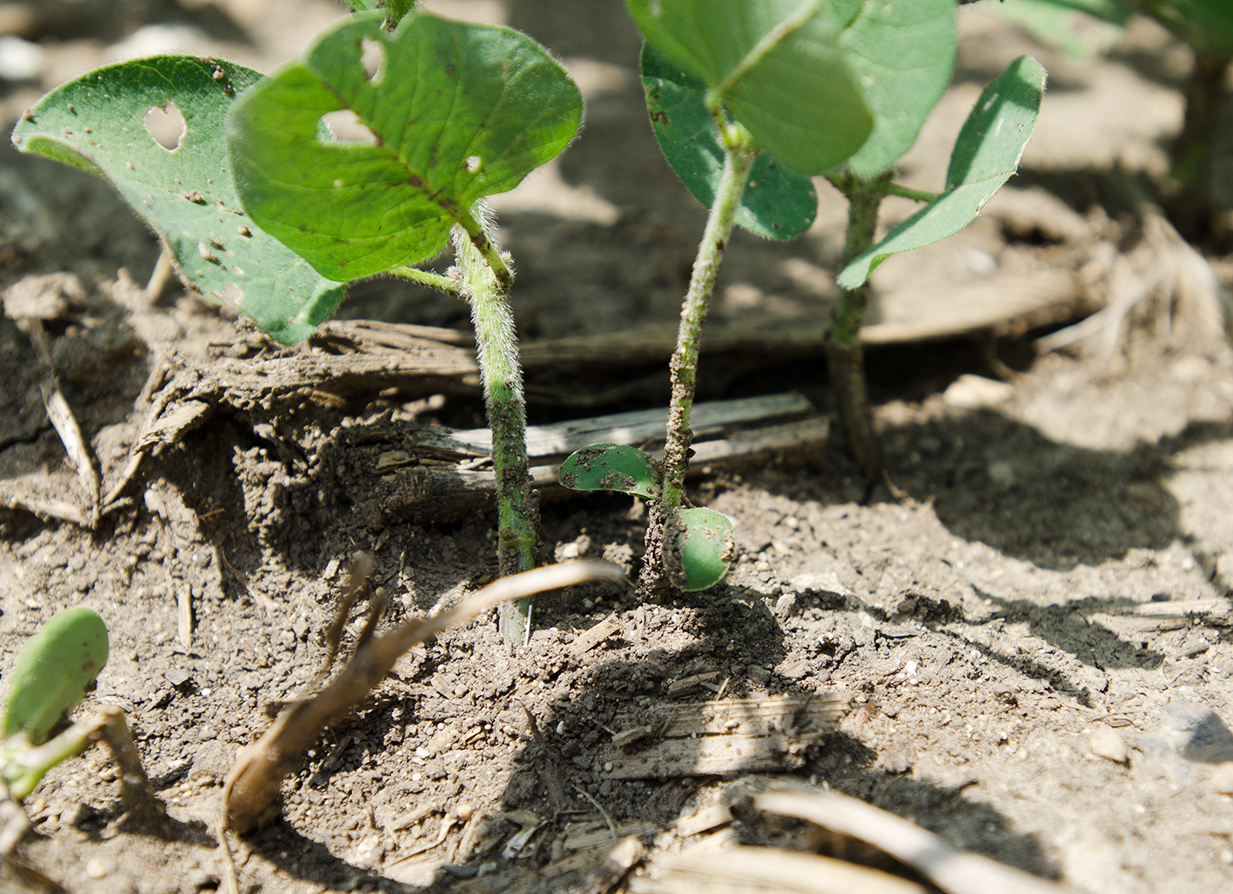
The best guess of some of Iowa’s most qualified climate and weather experts is for a warmer and drier than average growing season. (Photo: Joseph L. Murphy/Iowa Soybean Association
Dry conditions covering most of Iowa expected to persist
March 9, 2021 | Aaron Putze, APR
While meteorology involves a lot of science, forecasting remains largely guesswork.
The best guess of some of Iowa’s most qualified climate and weather experts is for a warmer and drier than average growing season for most of the upper Midwest.
The prediction, offered during an Iowa Department of Agriculture drought condition update via Zoom March 3, is catching the attention of Iowa’s ag secretary.
“A new growing season is coming fast,” said Mike Naig, whose family grows soybeans and corn near Cylinder, “and the D-3 drought condition map forms an arrow pointing almost directly at my farm.”
Naig’s reference is of an extreme drought designation that runs from the Iowa/South Dakota border near Rock Valley to Emmetsburg. Precipitation deficits of as much as 12-15 inches are common in the region.
The National Integrated Drought Information System classifies 52 percent of the state as abnormally dry. Forty percent of Iowa is currently under a drought advisory ranging from moderate to extreme.
My how times change.
Inside two years ago, flood forecasts and recovery along the Missouri River dominated the headlines. Now, drought concerns are getting the attention, and for good reason.
State climatologist Justin Glisan said dryness began creeping into the western two-thirds of Iowa as last year’s growing season matured. The trend hasn’t changed.
For 2020, statewide precipitation was 6.2 inches below normal, or the 36th driest on record. It was also the 33rd warmest year on record for a state that ranks second nationally in soybean production and first in corn.
“We’re dry coming into 2021, far different from a year-ago when soil moisture levels were locked and loaded,” Glisan said.
Farmers in northeast and east central Iowa have bucked the trend thanks to slightly above precipitation amounts over the past 12-14 months. That trend may continue as models favor storms and precipitation to track over the eastern third of Iowa into Illinois and Indiana.
The margin for error in terms of ideal planting conditions is slim as farmers prepare to head to the fields and plant record acres of soybeans and corn. Drier soils dry faster and deeper. With the snow melt largely over for most of Iowa, topsoil moisture levels are adequate but subsoil moisture levels are at just 60-70 percent of capacity.
Long-term weather and precipitation models are not encouraging to make up the deficit.
Expected precipitation amounts for a large portion of Iowa from April – July range from 14-19 inches. Row crops require around 25 inches of water during the same period.
Jeff Zogg of the National Weather Service says forecasting temperatures and rainfall for Iowa’s growing season is always difficult. Adding to the complexity this year is the presence of two competing weather systems to the east and west of Iowa. The boundary area between the two lessens the confidence of predicting long-term temperature and precipitation trends.
“There’s no strong indication of above or below normal chances of precipitation over the next month,” he says. “And for the next three months, the trend is above normal temps and about an equal chance for above/below normal precipitation.
“We’re not seeing any strong indications that this would move to above normal so it’s definitely something to keep an eye on.”
With no major precipitation systems expected to arrive in the Midwest any time soon, forecasters say the drum beat to dryer continues.
“We only see a continued degradation in moisture conditions throughout Iowa and much of the upper Midwest,” said Zogg. “And while we’ve seen some improvement in western Iowa, the caveat is that if we continue to miss expected precipitation, the region will regress quickly.”
Bottom line: the evidence points to ongoing issues and the need to remain alert.
“We need several weeks of above average precipitation to begin easing the drought situation,” said Tim Hall, Iowa Department of Natural Resources’ coordinator of hydrology. “Whereas flooding can happen overnight, it takes a long time to get into a drought. That said, it can take a long time to get out of a drought, too.”
Back